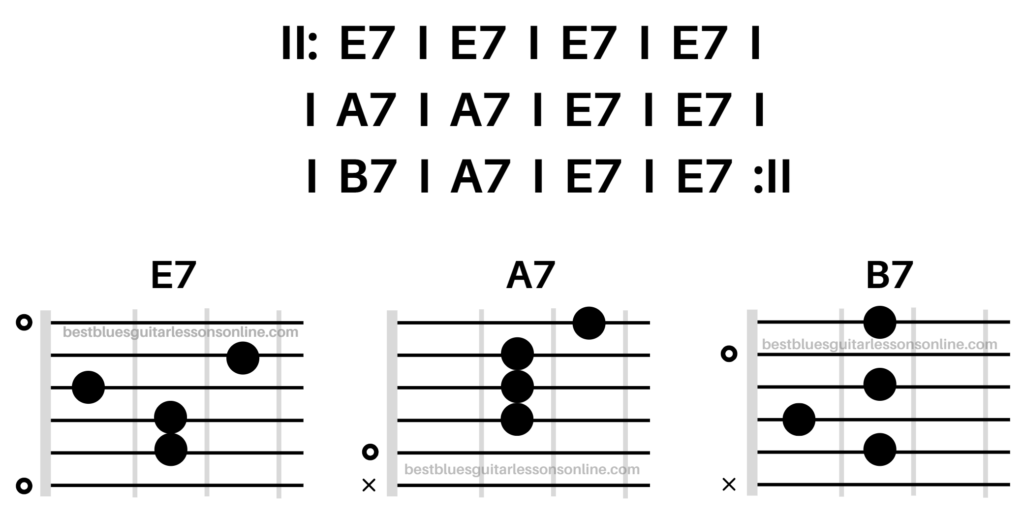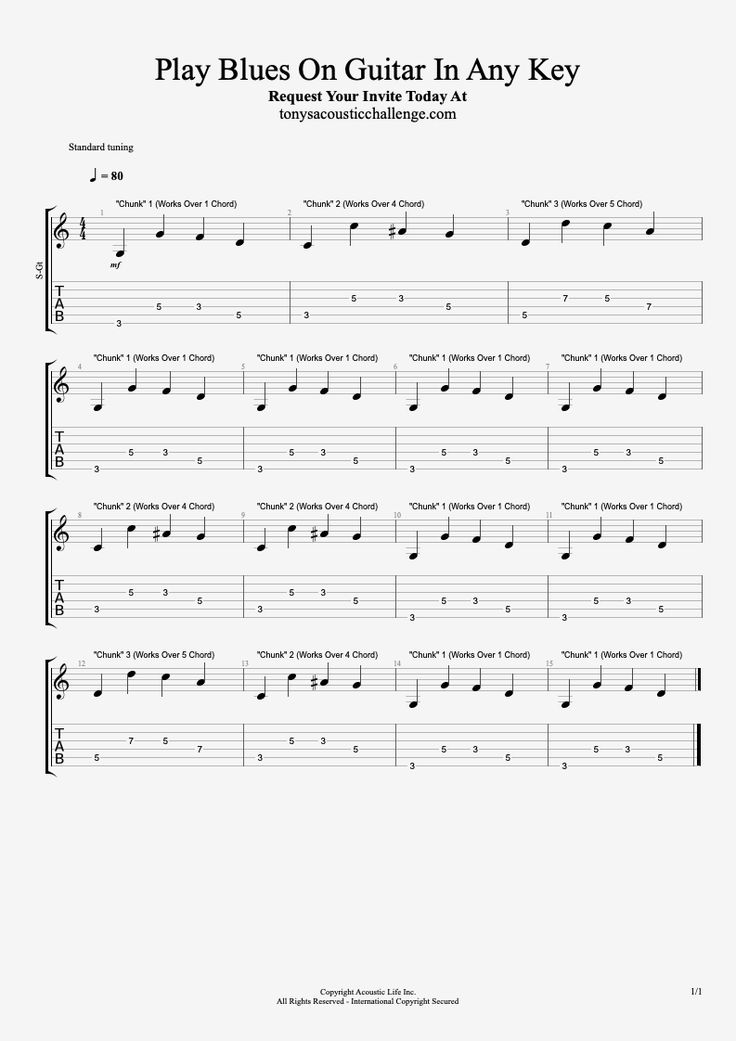If you’ve ever listened to B.B. King, Stevie Ray Vaughan, or Eric Clapton and wished you could play the blues like them, you’re in the right place. Blues guitar is one of the most expressive and soulful styles you can learn, and the best part is – it’s beginner-friendly! Whether you’re just starting or looking to improve your licks, this step-by-step tutorial will help you get started with playing the blues on guitar.

What Is the Blues?
Blues music is a genre born from African-American traditions in the Deep South of the U.S. in the late 19th century. It’s known for its emotional expression, soulful melodies, and simple but powerful chord progressions.
The most common form in blues music is the 12-bar blues, which we’ll cover below.
Step 1: Learn the 12-Bar Blues Progression
The 12-bar blues is the foundation of countless blues songs. It’s a chord progression that follows this pattern:
In the key of E:
nginxCopyEditE7 | E7 | E7 | E7
A7 | A7 | E7 | E7
B7 | A7 | E7 | B7
Try These Open Chords:
- E7: 020100
- A7: X02020
- B7: X21202
Play these chords in a slow shuffle rhythm. Feel the groove!
Step 2: Master the Blues Scale
The blues scale is the heart of blues soloing. Start with the E minor blues scale:
mathematicaCopyEditE – G – A – Bb – B – D – E
Here’s how to play it in open position:
luaCopyEdite|-----------------------------
B|-----------------------------
G|-------------0–2–3----------
D|-------0–2------------------
A|---0–1–2--------------------
E|0–3--------------------------
Practice it slowly until your fingers feel comfortable.
Step 3: Learn a Basic Blues Riff
A cool blues rhythm riff can take your playing to the next level. Try this simple riff in the key of E:
luaCopyEdite|-----------------------------
B|-----------------------------
G|-----------------------------
D|--2--4--2--4--2--4--2--4-----
A|--2--5--2--5--2--5--2--5-----
E|--0--0--0--0--0--0--0--0-----
Use palm muting to give it a “chuggy” feel and play it in a swing rhythm.
Step 4: Add Some Licks
Once you’re familiar with the scale, start adding licks. Here’s a classic blues lick in E:
luaCopyEdite|------------------------
B|--------3--0-----------
G|--0h1h2------2p0--------
D|------------------2-----
A|------------------------
E|------------------------
Use techniques like hammer-ons, pull-offs, and slides to make your licks more expressive.
Step 5: Practice With a Backing Track
The best way to get a feel for blues is to jam along. Search YouTube for “E blues backing track” and try improvising using the E minor blues scale. Experiment with phrasing, rhythm, and timing. There’s no wrong note in the blues—it’s all about how you play it.
Final Tips
- Practice daily, even if it’s just for 10–15 minutes.
- Focus on feeling and expression, not just speed.
- Record yourself to track your progress and hear where you can improve.
- Learn to bend notes and add vibrato—blues is all about emotion.
Conclusion
Learning to play the blues on guitar is one of the most rewarding musical journeys you can take. With just a few chords, a simple scale, and a little soul, you’ll be able to jam the blues and express yourself like never before.
Keep practicing, and don’t forget: It ain’t what you play—it’s how you play it.

